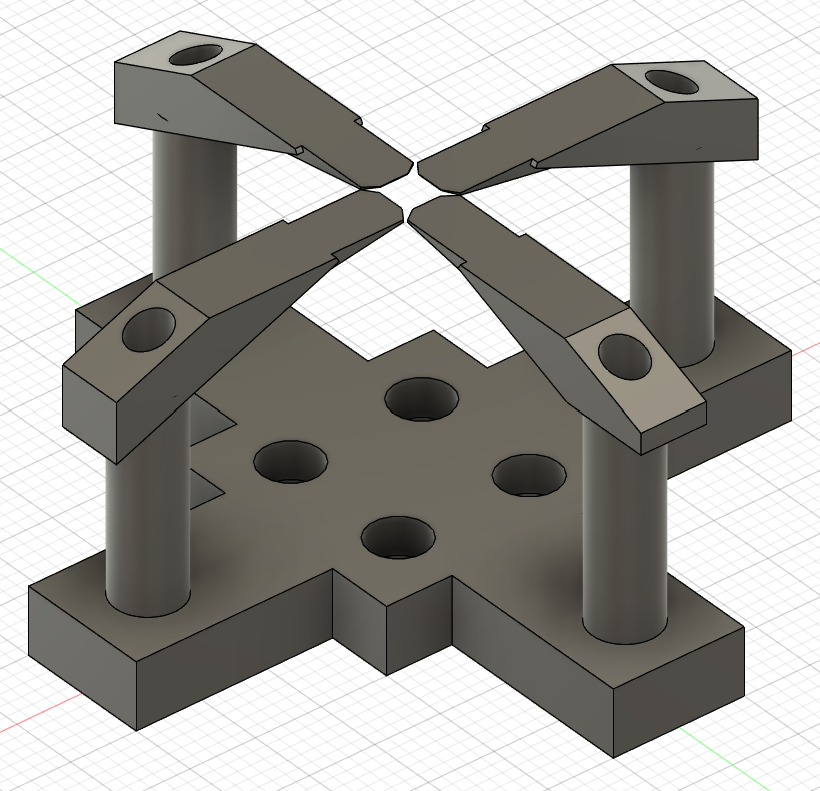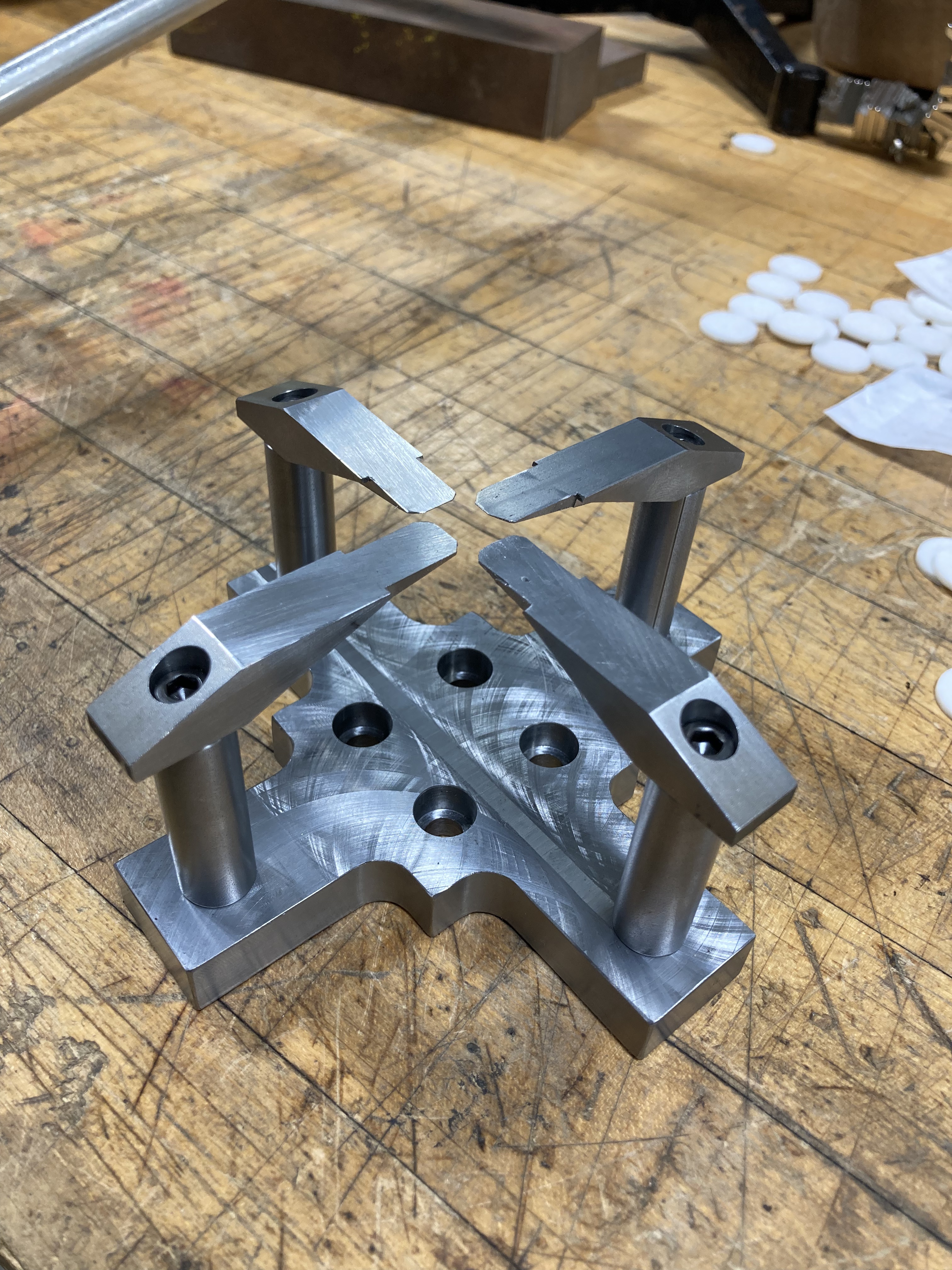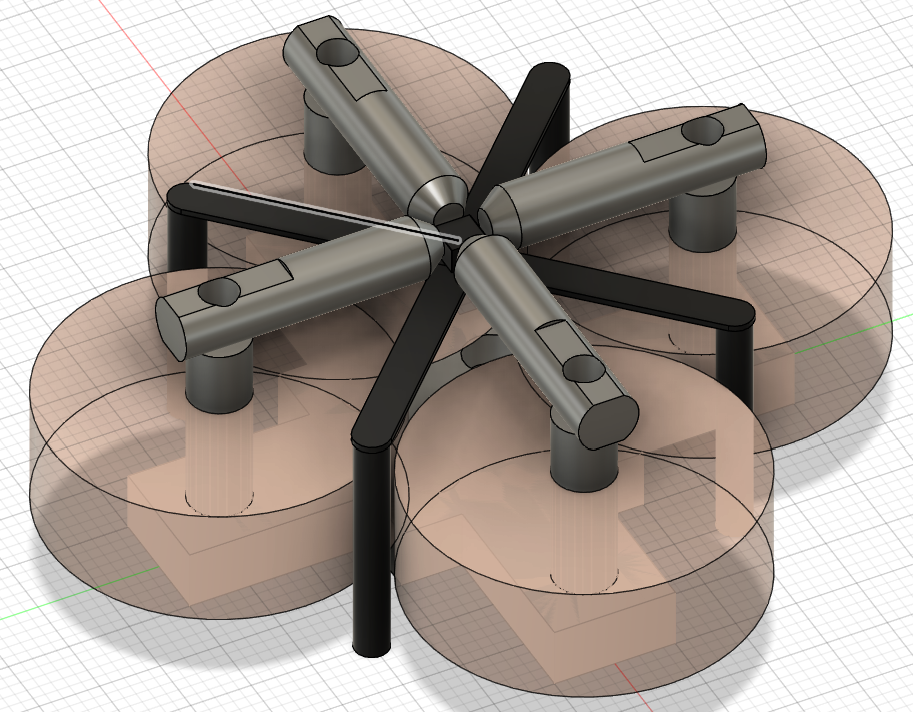Completed on: 2023-09-18


Here we see the blueprint of the vector magnet as it was machined to the original spec before we attach the magnets made in our magnet maker! Unfortunately a quick glance tells you all you need to know about how strong of a field we could get from the magnet as the pole shapes are quite sub-optimal. Not sure what was going in my head right there as I reflect on this years laters (a quick search through my old photos showed a schematic where we can lay a glass slide atop the pieces and use the stray field as our field but for obvious reasons this is problematic). I also apoligize that the CAD is not quite the final product but just image only the matching pole piece was made 4 times.


Here we see the vector magnet in its final form, ready to be used in our ST-FMR setup (or not)! I cannot in good conscience claim full ownership of this design as our undergrad Julian helped with the pole pieces of the fixed design and him and my labmate Liang wound most of the remaining magnets -- at least until an unfortunate accident. Hint: Look closely at the botom coil what do you notice? When we run these magnets they can get quite hot -- in fact in the process of making the magnet you actually end up shorting the coils to melt the thermoplastic coating of the wires to solidy the coils shape. What do you think happens when after its solidified we ramp up the current even further?
Unfortunately not all projects are made to work out. While tasked to build up a Spin-Torque Ferromagnetic Resonance (ST-FMR) setup for our lab I initially decided to pick the more adventurous route to creating an angle resolved ST-FMR setup. This would be built based off of my knowledge from my time at Berkeley where I worked on the ST-FMR setup there and built a motrized system for a suite of measurements. This time, rather than rotating our sample why not rotate the magnetic field itself! There's two main ways we can accomplish this, and this project is my attempt (and failure) at one of them. While I could very well have simply put the magnet itself on a rotating platform that seemed boring at the time. Naively, I had in my research experience gotten to use a vector magnet before and wanted to try my hand at making my very own. A vector magnet is a type of magnet that is typically made of 4 or 6 poles (2d vs 3d control) that allows one to vary the current in the coils along certain axes to generate any arbitrary magnetic field strength and direciton. So I went ahead and working off of the back of my previous magnet designs I designed a vector magnet. Unfortunately, coupling between the poles and a strong remnance (due to using steel as the core) made my vector magnet not as accurate as I would have hoped. Coupled with some unforunate accidents my colleauges performed it was scrapped in favor of the simpler rotating magnet which you can see on the ST-FMR landing page! That being said I would like to technically claim I made a vector magnet since when testing it despites its obvious shortcomings you could rotate the magnetic field direction and change the magnitude but not quite as well as I had hoped so thats all for this project.